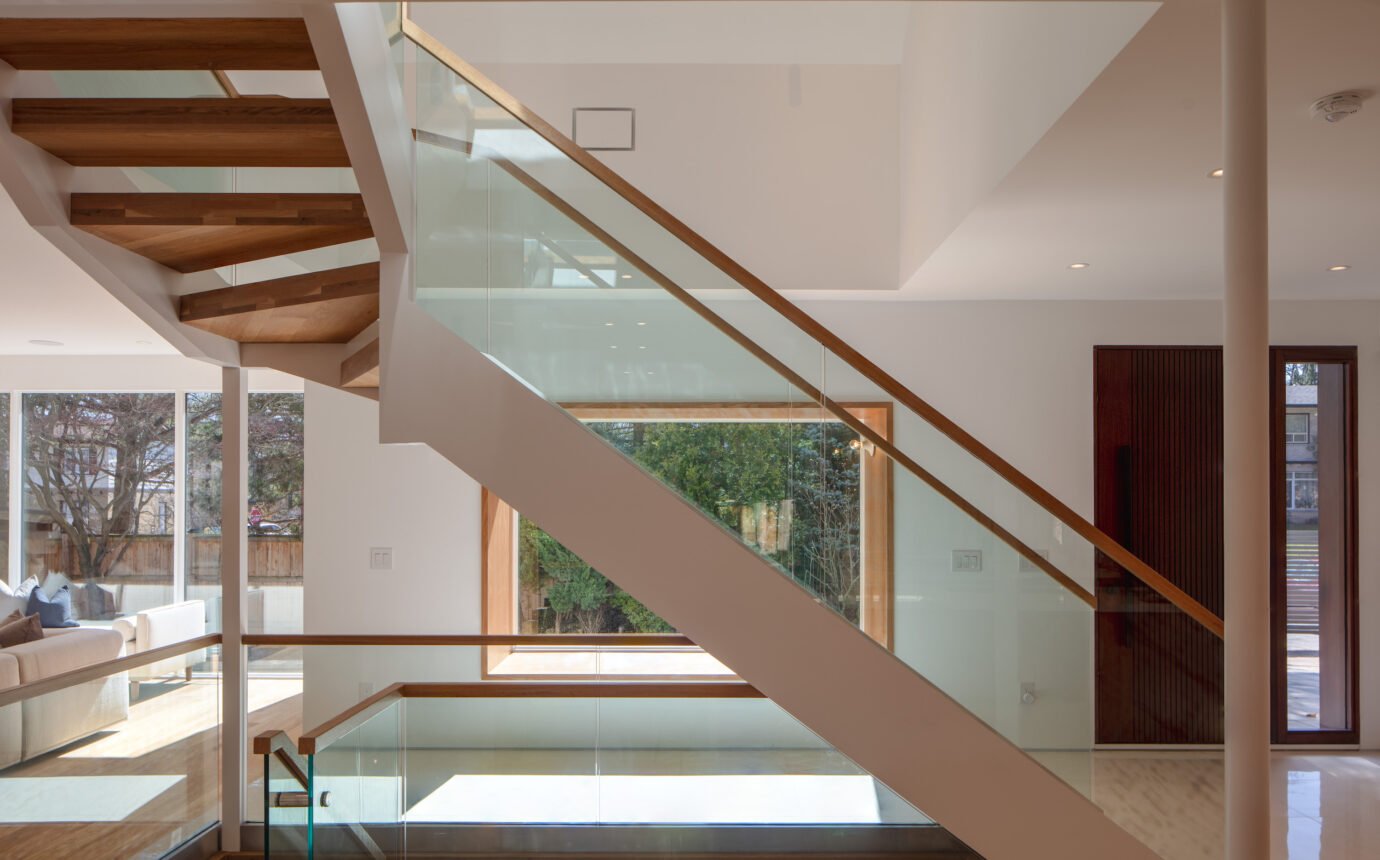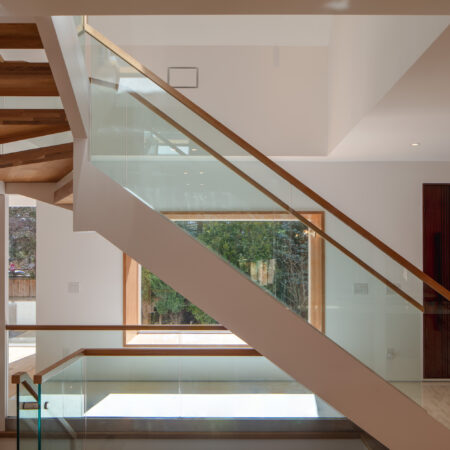How a Maximalist Oddity Was Transformed Into a Warm, Light-Filled Family Home


In this Don Mills renovation, Bau & Ćos Studio takes a bold step toward a new design language
When Toronto-based architecture firm Bau & Ćos Studio first entered the Don Mills dwelling, they found a fever dream of a home: gothic wallpaper, velvet curtains, fresco-like ceiling murals, and a dark, jungle-like sauna tucked in the basement. “It felt like we were on a David Lynch set,” recalls studio co-founder Andres Ulises Bautista. Though the house was clearly the work of a previous architect—complete with custom millwork and stained glass—it was also deeply eccentric. “There’s a kind of professional respect,” Bautista explains. “We didn’t want to stomp on what came before. But it also had to work for a new family.”
The new homeowners, a couple with two young children, had very different priorities: openness, functionality and a strong connection to nature. Working closely with the family, Bautista and co-founder Novka Ćosović led a full interior renovation that prioritized natural light, warm materials and better circulation—while nodding gently to the home’s unconventional past.
A Staircase That Reshaped the Home
One of the most dramatic architectural moves in the home makeover was consolidating two existing staircases into a single, sculptural staircase at the centre of the home. “It became the anchor,” says Ćosović. “Not just a circulation element, but a way to bring in light, organize the floor plan and introduce a moment of pause.” Above the stairwell, they carved out a cathedral ceiling and installed a skylight positioned to catch south-facing sunlight—bringing natural light all the way down to the now-underpinned basement.
Previously cramped and dark, the basement is now a highlight: a wellness-focused retreat with a sauna, yoga area, and tea nook, all benefiting from high ceilings and diffused light. “It doesn’t feel like a basement anymore,” says Bautista. “It feels like a continuation of the main house.”
Upstairs, the team rethought conventional program placement. Instead of tucking children’s zones into the basement—as is common in North America—they created a central second-floor corridor with a study nook, library shelving, and family lounge. “It’s a small shift, but it reflects cultural nuance,” says Ćosović, referring to the client’s Middle Eastern background and desire for communal family space at the heart of the home.
That cultural lens informed other decisions, too. The kitchen—once enclosed and cut off from the rest of the home—was opened up and redesigned with two sinks, a large island, and a horizontal window overlooking newly planted trees. “Sightlines were everything,” notes Bautista. “The client wanted to cook and still keep an eye on the kids playing in the living room.” A peninsula was added for casual meals or remote work, and a new side entrance from the garage improved flow.
Functionality drove nearly every design decision, including the material palette. “We’re always trying to balance warmth with performance,” says Ćosović. Light oak and soft travertine were chosen for shared spaces, while the primary ensuite features slate—selected for its water resistance, tactile feel, and underused beauty. “Slate is a bit underrated,” Bautista adds. “It’s great for heated floors, it has texture, and it wears really well.”
Material selections weren’t made in a vacuum. The studio brought samples to the site throughout construction, testing them in natural light at different times of day. “Showroom lighting doesn’t tell you enough,” says Ćosović. “You have to see how materials behave in the real space.”
Grounded in Routine
That level of care extended to the client relationship throughout the home makeover. Weekly meetings were held throughout the design phase, during which multiple layout options were explored and refined. “We got to know everything about their routine—from when the kids woke up to when conference calls were taken at 3 a.m.,” Bautista recalls. “It let us narrate their lifestyle through the design.”
While the studio has handled numerous renovations before, Addison House marks a turning point. “This was the first time a client told us, ‘Treat it like a blank canvas,’” says Bautista. “We had the freedom to really explore what was possible.” The result is a house that balances editorial elegance with livable practicality—a home that feels both personal and timeless. For Bau & Ćos Studio, it’s not just a project—it’s a milestone. “Addison showed us the level we want to work at,” says Ćosović. “And how to stay there.”






































